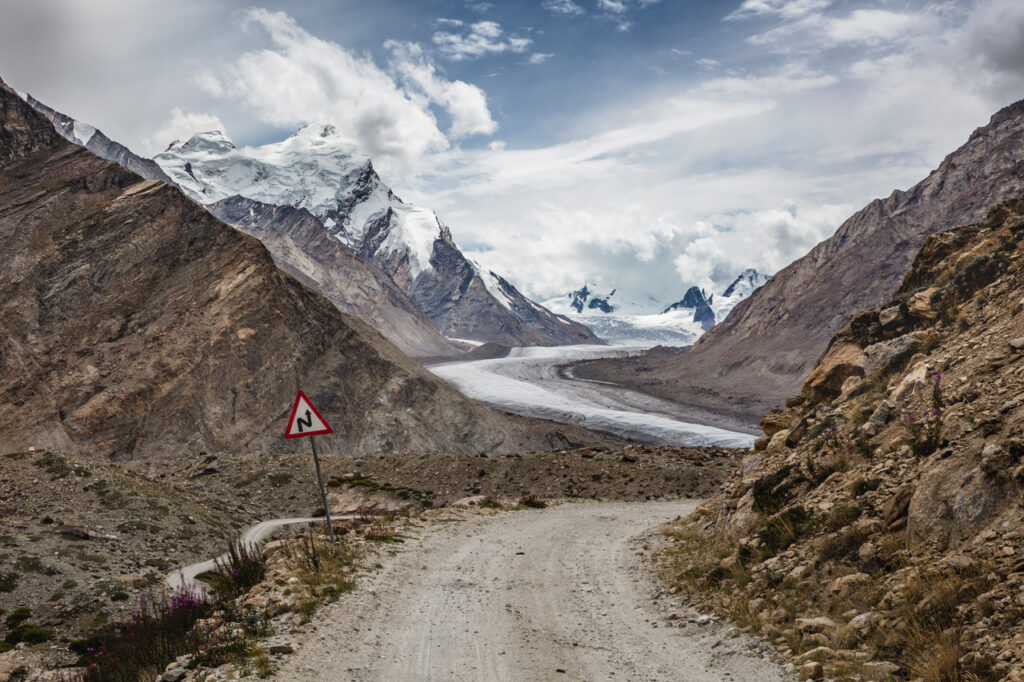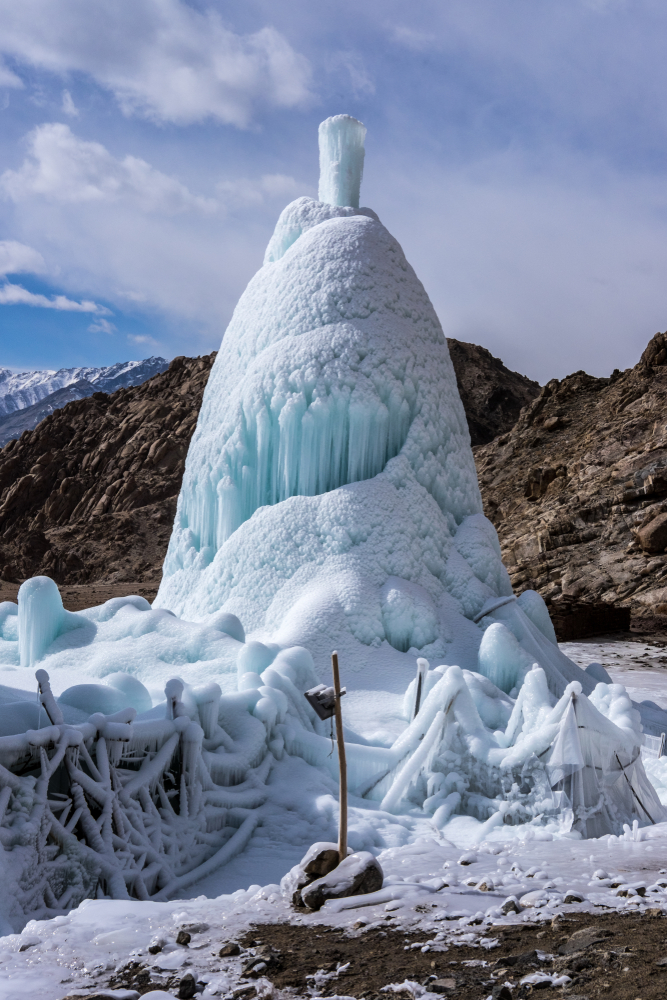High up in the Himalayas where the weather is harsh and life is challenging, a region is in severe danger.
Mountains are the primary freshwater source for half the world’s population. Their fragile ecosystems are particularly vulnerable to global warming. Center stage facing the destructive impact of climate change is the Indian region of Ladakh. The land of high passes, with its otherworldly landscapes is a place like no other. It is the closest most of us will ever get to the moon. The high altitude cold desert in the rain shadow of the Himalayas is home to villages located at 2700 to 4000 meters above the sea, inhabited by the humble Ladakhi people permeated by their rich culture. Countless Buddhist monasteries decorate this landscape where surprisingly lush valleys and vast plateaus are surrounded by steep mountain slopes.
Here, in the northernmost part of India, Ladakhi farmers are in a constant battle with climate change. Temperatures are rising much faster in the Himalayas than elsewhere in India. Increasing greenhouse gases and carbon emissions have triggered a 3°C increase in average temperature in the region during the past decades.
Local farmers remember days of thick blankets of snow covering the land. As the snowmelt came in spring, small streams would irrigate the newly planted crops—today, those essential streams have slowed to a mere trickle.


In Ladakh, which is more arid than the Sahara, water resources are rare. Most settlements are located around glacial streams that provide water for the fields and plantations where barley, wheat, apples and apricots are grown. But in the last decades those precious streams have decreased dramatically. The glaciers have retreated higher up into the mountains, holding much less water than before. Rivers used to swell in the spring with the melting ice but locals report that now this does not happen until summer.
Water scarcity has always challenged Ladakhi agriculture and farmers have had to be inventive in meeting these challenges for a long time. In winter, when no water is needed for agriculture, farmers redirect streams and accumulate the water in shadowy areas where it freezes to glacier-like patches. When temperatures rise in the spring, these frozen patches, like natural glaciers, melt and are used to irrigate the fields.
However, those kinds of artificial glaciers require the remote shadows of mountains far away from civilisation. That makes it difficult to direct the water to the villages where it is needed. They also have a relatively large surface area—therefore melting quicker when the sun hits them in spring, not always covering the time period gap until the natural glacier melt starts.
In 2014 Sonam Wangchuk, a Ladakhi environmental engineer, came up with a method to form cone-shaped glaciers resembling the Stupas—Buddhist shrines filled with religious relics that are characteristic of Ladakh’s landscape. Due to their smaller surface area, the ice lasts much longer, supplying the fields with water until late summer.
The creation of these Ice Stupas is rather simple. Pipes are laid out underground below the frost line, leading the water downhill towards the village. As water naturally wants to maintain its level, pressure builds up in the pipes. This creates geyser-like fountains where they vertically exit the ground. Ladakhi nights get as cold as -50°C (including the wind chill factor) and therefore the water drops freeze on their way down, gradually building up the cone shaped glaciers. Over the course of winter, the Ice Stupas grow up to 30 meters high. When spring arrives, the melting ice is collected in reservoirs and from there directed to the farmlands.
In cooperation with the Students’ Educational and Cultural Movement of Ladakh (SECMOL), Wangchuk has built several Ice Stupas in Ladakh and taught local communities to do so by themselves with simple methods that require little capital investment. He even brought the idea to the European Alps in 2016. Using the additional water he generates with the Ice Stupas, Wangchuk, in collaboration with local students and monks, has planted thousands of trees in the high desert. He is hoping to create several lush oases in his homeland to protect it from the impacts of climate change.


Not all farmers see those artificial water sources as a sustainable solution. Some claim the water that is diverted to build the Ice Stupas is now missing when it comes time to replenish the groundwater of fields and wastelands over the winter. Wangchuk, on the other hand, does not see a problem here. He says that the locals are simply wary of new ideas. In summer, the snowmelt feeds the rivers that are crisscrossing the region and less than 10% of this water is used for farming. If fifty Ice Stupas store an extra 4% (roughly 4 million cubic meters) of the water to be used during the dry months of spring, there will still be plenty of it left for feeding the nearby Indus River.
Some experts reckon that by the current melting speed, 60% of all glaciers in the Himalayas will be lost in the next decade. If the ice of the ”Third Pole” vanishes it will not only endanger Ladakh but the entire planet. Solutions like the Ice Stupas are urgently needed and can help in the fight against global warming. Wangchuk hopes for a quick change of mind among the locals. “We in the mountains are minorities, not just ethnically but climate-wise,” he says. “Things that work in New York or New Delhi do not work in the mountains. We have to find our own solutions for our problems.”
Helene Witte




